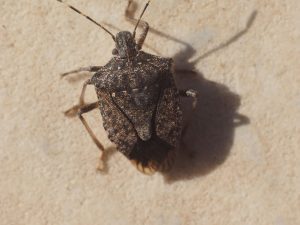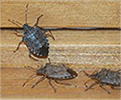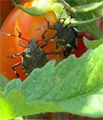Identification and Life Cycle
The more common species of the stink bug is the Brown Marmorated Stink Bug (Halyomorpha halys). The first reported occurance in the United States came from Allentown, PA in 1998. The name “stink bug”, refers to the foul-smelling odor it emits from its thoracic gland, which they use in self-defense.
The adult Brown stink bug is approximately 3/4 – inch long and has a distinctive shield-shaped body. It has different shades of brown on both its upper and lower body surfaces with patches of a coppery or metallic blue color “puncture holes” on the head and pronotum. They feed mostly on cultivated plants and animal prey such as caterpillars.
In early spring, the adult female stink bug will mate and then seek a suitable plant to lay her eggs. She will lay tightly packed rows of barrel-shaped eggs (approximately 20 to 30 eggs), on the underside of leaves. From May through August, stink bugs do not go through a metamorphosis stage, but are hatched from the eggs without sexual organs or wings. After hatching, the nymphs will huddle together near their empty egg shells and will molt 5 times before dispersing as adults. In September and October months, the adults begin to search for locations to hibernate during the winter. The adults tend to live between 6 to 8 months.






Comments are closed.